CLUTCH ADJUSTMENT
1. Loosen:
• Adjuster locknut (1)
2. Adjust:
• Clutch lever free play (3)
(by turning adjuster (2) in or out)

Free play:
2-3 mm (0.08 - 0.12 in)
If free play can not be adjusted, adjust by clutch cable length adjuster.
3. Loosen:
• Adjuster locknut (1)
4. Adjust:
• Clutch lever free play
(by turning clutch cable length adjuster (2) )
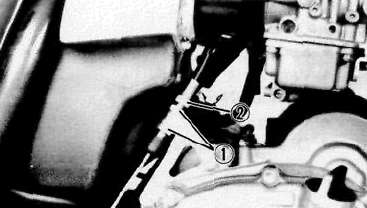
IGNITION TIMING CHECK
Flywheel is marked as follows:
(1) TDC for No. 1 cylinder
(2) Firing range for the No. 1 cylinder
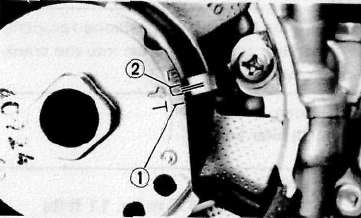
1. Check:
• Ignition timing
Ignition timing check steps:
• Remove the cover.
• Connect the Timing Light (YM-33277) i to No. 1 cylinder spark plug lead.
• Warm up the engine and let it idle at the specified idle speed of 1,050 ± 50 r/min.
• Visually check the stationary pointer in the timing window to verify it is within the required firing range indicated on the flywheel.
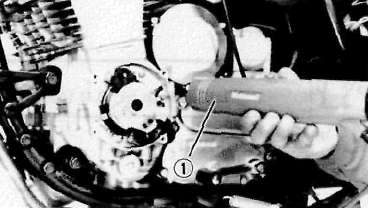
Incorrect firing — Check timing plate and/or pickup assembly (tightness damage)
Refer to CHAPTER 6, "ELECTRICAL" for further information.
(1) TDC for No. 1 cylinder
(2) Firing range for the No. 1 cylinder
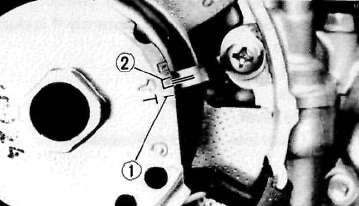
COMPRESSION PRESSURE MEASUREMENT
NOTE:
Insufficient compression pressure will result in performance loss.
1. Measure:
• Valve clearance
Out of specification — Adjust.
2. Warm up the engine.
3. Remove:
• Spark plugs
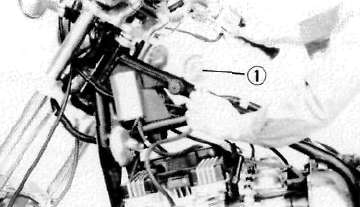
Compression pressure measurement steps:
• Install the Compression Gauge (YU-33223) (1) using an adapter.
• Crank over the engine with the electric starter (be sure the battery is fully charged) with the throttle wide-open until the compression reading on the gauge stabilizes.
• Check readings with specified levels (See chart).
Compression Pressure (at sea level):
Standard: 1,078 kPa (11 kg/cm2, 156 psi)
Minimum: 882 kPa (9 kg/cm2, 128 psi)
Maximum: 1,176 kPa (12 kg/cm2, 171 psi)
When cranking the engine, ground all of the spark plug leads to prevent sparking.
• Repeat the previous steps for the other cylinders.
• If pressure falls below the minimum level:
1. Squirt a few drops of oil into the affected cylinder.
2. Measure the compression again.
|
Compression Pressure (with oil introduced into cylinder) |
|
|
Higher than without oil |
Worn or damaged pistons |
|
Same as without oil |
Defective ring(s). valves, cylinder head gasket or piston is possible. |
|
Above maximum level |
Inspect cylinder head, valve surfaces, or piston crown for carbon deposits. |
NOTE:
The difference between the highest and lowest cylinder compression readings must not vary more than the specified value.
Difference Between Each Cylinder:
Less than 98 kPa (1 kg/cm2,14 psi)
- Printer-friendly version
- Log in to post comments
